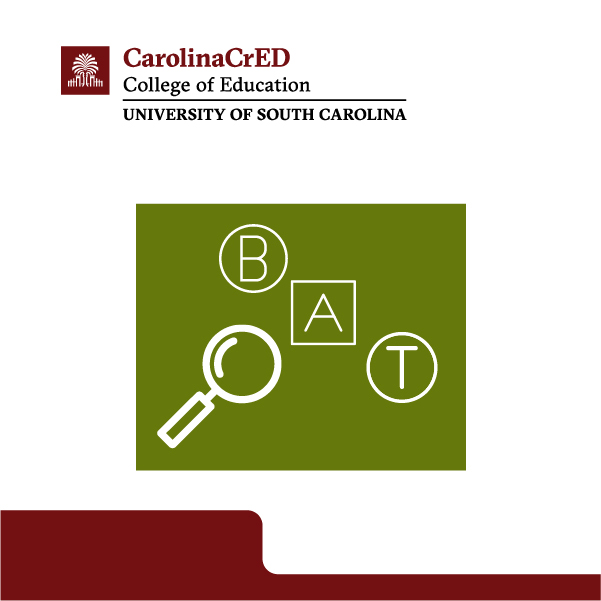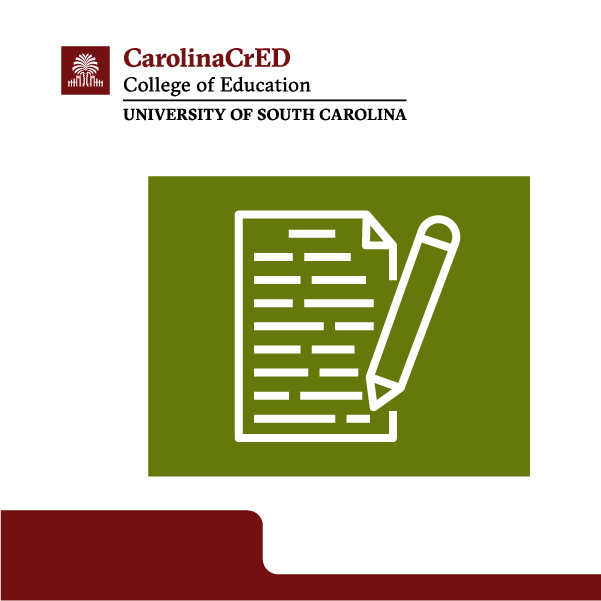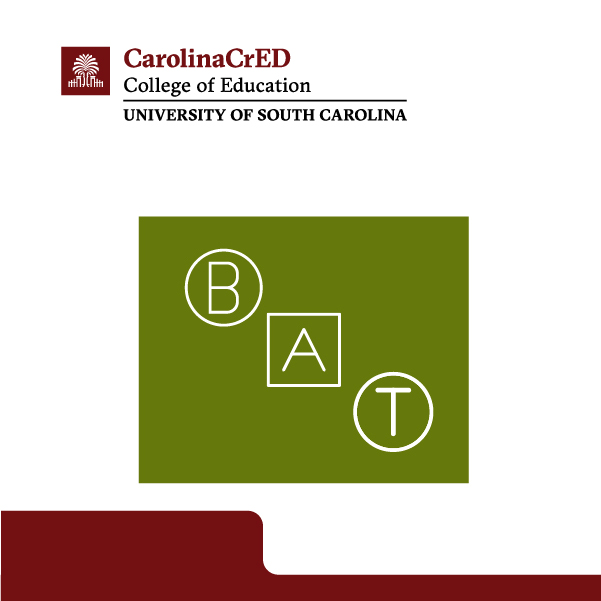Description
This stack is designed to provide educators with the tools to create high-quality literacy instruction to improve student achievement in both reading and writing.
What You'll Demonstrate
You will demonstrate the essential components of analyzing, designing, and implementing literacy instruction through a variety of instructional strategies.
Who Should Apply
- PK12 educators
- Instructional coaches
- Literacy coaches/interventionists
- Education support professionals
Micro-credentials

Analyzing Elements of Narrative Texts
The educator analyzes a narrative text to determine the elements of that text in order for students to be successful with narrative texts.

Analyzing Elements of Poetry
The educator analyzes a poem to determine the elements of that text in order to support student instruction in poetry.

Analyzing Phoneme Segmentation
The educator will analyze students’ ability to segment phonemes in single syllable words.

Analyzing Informational Text Complexity: Diversity and Equity
The educator analyzes an informational text to determine its complexity within the qualitative dimension focusing on diversity and equity.

Analyzing Informational Text Complexity: Meaning & Structure
The educator analyzes an informational text to determine its complexity within the qualitative dimension of meaning and structure.

Analyzing Informational Text Complexity: Readability
The educator analyzes an informational text to determine its complexity within the qualitative dimension focusing on the readability.

Analyzing Literary Text Complexity: Diversity & Equity
The educator analyzes a literary text to determine its complexity within the qualitative dimension focusing on diversity and equity.

Analyzing Literary Text Complexity: Meaning & Structure
The educator analyzes a literary text to determine its complexity within the qualitative dimension specifically focusing on meaning and structure.

Analyzing Literary Text Complexity: Readability
The educator analyzes a literary text to determine its complexity within the qualitative dimension focusing on readability.

Creating a Rhyming Word Toolbox
The educator will create a toolbox of strategies for teaching students how to identify rhyming word patterns.

Creating a Multisensory Toolbox
The educator creates a toolbox of multisensory strategies to teach students to read and spell irregular high-frequency words.

Learning About Readers: Kidwatching
The educator intentionally and systematically collects kidwatching data to get to know the readers and make instructional decisions.

Making Predictions
The educator models the use of a strategy for making predictions and collects and analyzes students' predictions.

Strategizing Using Text Complexity
The educator demonstrates an understanding of the quantitative measures of text complexity by calculating readability level of a literary text and determining appropriate strategies for students using the text.

Miscue Analysis: Analyzing Miscues
The educator analyzes the miscues a student makes when reading to determine the degree to which students use miscues as they read and how the student constructs meaning while reading.

Miscue Analysis: Marking Miscues
The educator documents the miscue marking for any given text and denotes substitutions, omissions, insertions, repetitions, reversals, etc.

Modeling Annotating Text
The educator will model annotating while reading a text.

Modeling Primary Sources: Implementation
The educator models reading a primary source for a class using established best practices.

Modeling Primary Sources: Planning
The educator creates a modeling plan that includes annotations of their thinking process and points of potential difficulty for the target audience.

Planning for Irregularly Spelled Words
The educator plans for a whole or small group lesson supporting students in their mastery of irregularly spelled high-frequency words utilizing a specific multisensory strategy.

Planning for Phoneme Segmentation
The educator will plan for and deliver a small group lesson teaching students how to segment phonemes in single syllable words.

Planning Reading Mini-Lessons
The educator creates a reading mini-lesson within readers’ workshop.

Selecting Texts: Book Clubs
The educator collects data from multiple sources to identify appropriate texts for book club groups that address the needs of participants.

Teaching Figurative Language: Allusion
After modeling how to identify and describe the function of simile with a mentor text, the educator collects and analyzes students’ work samples.

Teaching Figurative Language: Hyperbole
After modeling how to identify and describe the function of hyperbole with a mentor text, the educator collects and analyzes students’ work samples.

Teaching Figurative Language: Metaphor
After modeling how to identify and describe the function of metaphor with a mentor text, the educator collects and analyzes students’ work samples.

Teaching Figurative Language: Onomatopeia
After modeling how to identify onomatopoeia and analyze the function of onomatopoeia, the educator collects and analyzes students’ work samples.

Teaching Figurative Language: Simile
After modeling how to identify and describe the function of simile with a mentor text, the educator collects and analyzes students’ work samples.

Analyzing Close Reading Annotations
After modeling how to close read through annotations, the educator collects and analyzes students’ annotations.

Analyzing Multisensory Strategies
The educator analyzes the effectiveness of the use of multisensory strategies to support students’ mastery of irregularly spelled high frequency words.

Conferring about Book Clubs
The educator confers with learners to determine individual needs during book clubs.

Creating Semantic Maps
The educator creates semantic maps to teach content vocabulary.

Facilitating a Reading Conference
The educator facilitates reading conferences to support individual students in increasing reading proficiency.

Implementing Reading Mini-lessons
The educator implements a reading mini-lesson within readers’ workshop.

Modeling a Summarization
The educator models effective strategies for summarizing a text.

Planning for Annotating Text
The educator develops a lesson plan that supports students to annotate text for close reading.

Teaching Idioms
After providing a graphic organizer to facilitate the analyzing of idioms, the educator composes written feedback to support and extend learning.

Teaching Theme
The educator scaffolds by providing graphic organizers to help students identify the theme of a provided text.

Determining Goals for Readers
The educator utilizes a variety of data to determine a reading goal for a student.

Learning About Readers: Interviews
The educator uses the Burke Reading Inventory to get to know the readers and make instructional decisions.

Reading Process: Book Introductions
The educator writes and shares two book introductions (one for a fiction book and one for a nonfiction book) to enable students to read more complex texts.